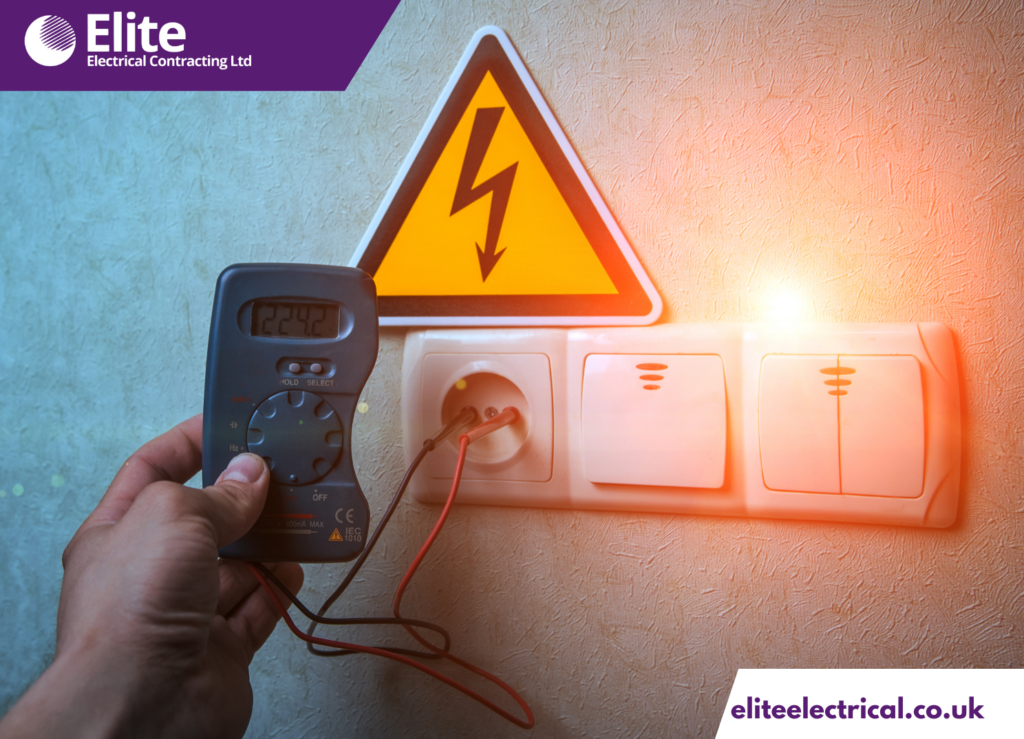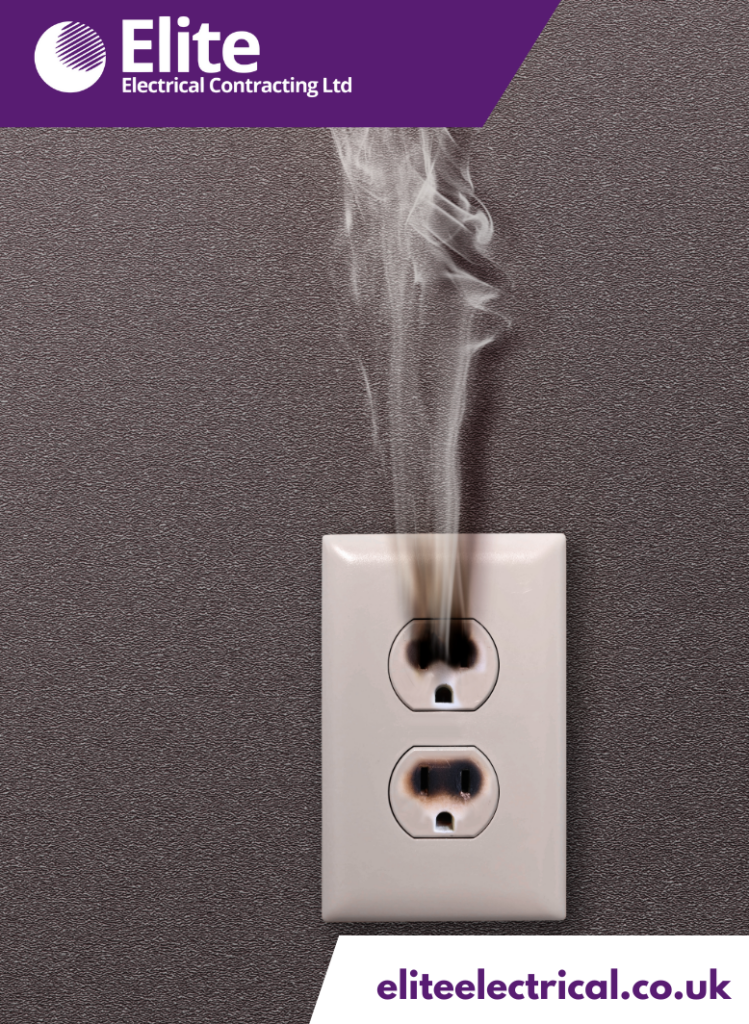Understanding Electrical Fires: Common Causes and How to Prevent Them
Electrical fires are a significant hazard that can occur in any home or commercial property, often with devastating consequences. An electrical fire is defined as a fire that is caused by electrical faults or malfunctions. This type of fire can arise from various sources, including faulty wiring, overloaded circuits, or malfunctioning appliances.
Understanding electrical fires is crucial for both safety and prevention. By recognising the common causes and warning signs of electrical fires, individuals can take proactive measures to mitigate risks and protect their property and loved ones. Awareness of these dangers not only helps in preventing potential disasters but also empowers individuals to respond effectively should an incident occur.
Common Causes of Electrical Fires
1. Faulty Wiring
One of the leading causes of electrical fires is faulty wiring. Over time, wiring systems can deteriorate due to age or damage, leading to increased resistance and heat generation. Additionally, improper installation or maintenance can create vulnerabilities within the electrical system, making it more susceptible to faults that could ignite a fire.

2. Overloaded Circuits
Overloading occurs when too many devices are connected to a single circuit, drawing more current than it can safely handle. This is particularly common in households where multiple high-power appliances—such as heaters, microwaves, and washing machines—are used simultaneously on the same circuit. The excessive load can cause overheating and ultimately result in an electrical fire.
3. Faulty Appliances
Many household appliances can become potential fire hazards if they are faulty or poorly maintained. Common culprits include refrigerators, washing machines, and dryers. Regular inspections and maintenance are essential to ensure these appliances operate safely and efficiently, reducing the risk of electrical fires.
4. Extension Cords and Power Strips
While extension cords and power strips offer convenience, they can also pose significant risks if misused or overloaded. Connecting too many devices to a single extension cord can lead to overheating and potential fires. To ensure safety, it is advisable to use extension cords only as a temporary solution and avoid daisy-chaining multiple cords together.
5. Light Fixtures and Bulbs
Using incorrect wattage bulbs in light fixtures can create a fire hazard due to excessive heat production. Furthermore, placing flammable materials near light sources—such as lamp shades or curtains—can increase the risk of ignition. It is crucial to always use bulbs that match the recommended wattage for each fixture and maintain a safe distance between light sources and combustible materials.
6. Space Heaters
Portable space heaters are often used for additional warmth during colder months; however, they come with safety concerns. These devices can easily overheat if placed too close to furniture or other flammable items. Best practices for safe usage include keeping space heaters at least one metre away from any combustibles and ensuring they are turned off when leaving the room or going to bed.
7. Electrical Outlets
Faulty outlets can be a major source of electrical fires. Signs of trouble include discolouration around the outlet, warmth when touched, or frequent tripping of circuit breakers connected to that outlet. It is vital to replace damaged outlets promptly to prevent potential fire hazards.

Warning Signs of an Electrical Fire
Recognising the warning signs of an electrical fire can be lifesaving:
- Burning Odours: A burning smell resembling melting plastic may indicate overheating wires or components.
- Smoke or Visible Sparks: Any visible smoke or sparks emanating from outlets or appliances should be treated as an emergency.
- Flickering Lights: Frequent flickering or dimming lights may suggest issues with wiring or overloaded circuits.
- Warm Switch Plates: If switch plates feel warm to the touch, it could signal an underlying problem that requires immediate attention.
- Frequent Tripping of Circuit Breakers: Regularly tripped circuit breakers indicate overloads or faults in the system that must be addressed by a qualified electrician.
Immediate Actions in Case of an Electrical Fire
In the unfortunate event of an electrical fire, quick and decisive action is vital for ensuring safety. Here are the steps to take:
- Evacuate the Premises and Call Emergency Services: The first priority is to ensure everyone is safe. Evacuate all occupants from the building and call 999 or your local emergency services to report the fire.
- If Safe, Cut Power at the Main Circuit Breaker: If you can do so safely without entering a hazardous area, turn off the main circuit breaker to cut power to the building. However, do not attempt this if there is smoke or flames nearby.
- Use a Fire Extinguisher Rated for Electrical Fires: If the fire is small and contained, you may use a fire extinguisher labelled for Class E (Electrical) fires. Remember never to use water on an electrical fire, as it can conduct electricity and worsen the situation.
- Do Not Attempt to Tackle Large Fires Without Professional Help: If the fire is large or spreading quickly, evacuate immediately and wait for professional firefighters to arrive. Do not risk your safety by trying to extinguish a significant fire on your own.

Prevention Strategies
Preventing electrical fires requires vigilance and proactive measures. Here are effective strategies to help reduce risks:
Regular Inspections
- Importance of Routine Checks by Licensed Electricians: Schedule regular inspections by qualified electricians to ensure your electrical system is safe and up to code. These professionals can identify potential hazards before they escalate into serious issues.
- Identifying Potential Hazards Before They Escalate: Routine inspections help detect problems such as faulty wiring, overloaded circuits, or malfunctioning appliances early on, allowing for timely repairs.
Safe Practices
- Avoiding Overloading Outlets and Using Appliances Safely: Be mindful not to overload outlets with too many devices, especially high-wattage appliances. Use appliances according to manufacturer instructions and avoid daisy-chaining multiple extension cords.
- Keeping Flammable Materials Away from Heat Sources: Maintain a safe distance between heat-producing devices (like space heaters and light fixtures) and any flammable materials such as curtains, paper products, or furniture.

Installation of Safety Devices
- Use of Ground Fault Circuit Interrupters (GFCIs): Install GFCIs in areas where water is present (e.g., kitchens and bathrooms) as they provide added protection against electrical shocks and potential fires by cutting off power when they detect ground faults.
- Importance of Smoke Alarms and Their Maintenance: Ensure smoke alarms are installed throughout your property and test them regularly. Replace batteries at least once a year and replace smoke alarms every ten years for optimal safety.
Educating Members
- Training on Recognising Hazards and Emergency Procedures: Educate all members about potential electrical hazards and how to respond in case of an emergency. This knowledge can be crucial during stressful situations.
- Developing an Emergency Plan in Case of Fire: Create a comprehensive fire escape plan that includes designated meeting points outside the home. Regularly practise this plan with all members to ensure everyone knows what to do in case of an emergency.
By being vigilant about warning signs, knowing how to respond in an emergency, and implementing preventative measures, individuals can significantly reduce the risk of electrical fires in their homes or businesses.
Conclusion
Understanding the nature of electrical fires, their warning signs, and the immediate actions to take in case of an emergency is crucial for ensuring safety in any environment. Electrical fires can escalate quickly, leading to devastating consequences for both property and lives. By being vigilant and proactive, individuals can significantly reduce the risk of electrical fires and ensure a safer living or working space.
At Elite Electrical, we are committed to providing expert electrical services and advice to help you maintain a safe electrical system. Established in 1999 and based in Cheam, Surrey, we have built a reputation for reliability and excellence in the electrical contracting industry. Our experienced team is dedicated to ensuring your electrical systems are safe, efficient, and compliant with current regulations.
Protect Your Home: Contact Us Today!
Don’t wait until it’s too late! If you suspect any issues with your electrical system or want to schedule a safety inspection, contact Elite Electrical today. Our skilled electricians are here to assist you with any concerns you may have.
Get in touch with us:
- Address: 30 Upper Mulgrave Road, Sutton, Surrey, SM2 7BD
- Phone: 020 8644 3200
- Email: [email protected]
Let us help you protect your home or business from electrical hazards. Reach out now for a consultation or to arrange a service!







